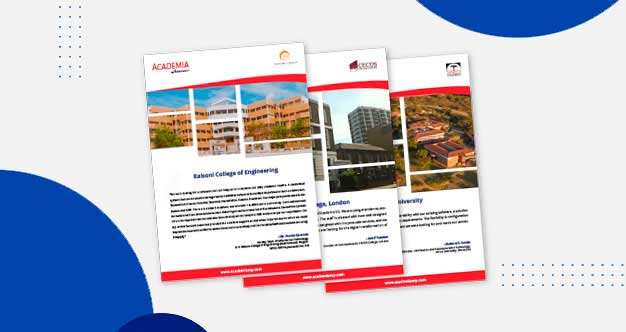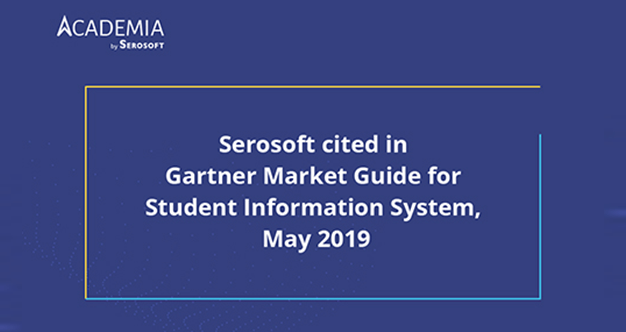Navigating the Digital Frontier: A Comprehensive Guide to Student Information Systems
In the digital age, educational institutions face the monumental task of managing vast amounts of student data efficiently and securely. From admissions and enrollment to academic progress tracking and graduation, the complexities of student management demand sophisticated solutions that streamline processes and enhance administrative effectiveness. Enter the Student Information System (SIS) – a powerful software tool designed to centralize student information, automate workflows, and facilitate seamless communication between stakeholders. In this comprehensive guide, we explore the key features, benefits, and considerations of implementing a Student Information System, empowering educational institutions to harness the full potential of digital transformation in student administration.
Understanding the Student Information System
At its core, a Student Information System (SIS) is a centralized platform that enables educational institutions to manage student-related processes and data systematically. From managing admissions and registration to tracking academic progress and facilitating communication, an SIS serves as the digital backbone of student administration, providing a comprehensive suite of tools to streamline workflows and enhance operational efficiency. By integrating various functionalities such as student records management, course scheduling, grade tracking, and communication management, an SIS empowers institutions to optimize resource allocation, improve decision-making, and deliver a superior student experience.
Key Features and Functionality
A robust Student Information System offers a wide range of features and functionalities tailored to the unique needs of educational institutions. Some key features to look for when evaluating an SIS include:
Student Records Management: Centralized storage and management of student demographic information, academic records, attendance records, and disciplinary history.
Admissions and Enrollment Management: Streamlined processes for managing admissions applications, enrollment registrations, and document submission, with automated workflows and customizable forms.
Course Management: Tools for course creation, scheduling, and assignment management, with support for prerequisites, class sizes, and instructor assignments.
Academic Progress Tracking: Real-time monitoring of student performance, including grades, assessments, and progress toward graduation requirements, with customizable dashboards and reporting capabilities.
Communication Management: Integrated communication tools for sending announcements, notifications, and reminders to students, faculty, and staff via email, SIS, or in-app messaging.
Financial Management: Billing and payment processing functionality for managing tuition fees, financial aid disbursements, and student accounts receivable.
Analytics and Reporting: Advanced analytics and reporting capabilities to track key performance indicators, identify trends, and generate insights for informed decision-making.
Benefits of Implementing a Student Information System
The adoption of a Student Information System offers numerous benefits for educational institutions, including:
Improved Efficiency: Automation of routine administrative tasks and workflows reduces manual effort, minimizes errors, and frees up staff time for more strategic activities.
Enhanced Data Accuracy and Security: Centralized data storage and standardized processes ensure data integrity and compliance with data protection regulations, reducing the risk of data breaches and unauthorized access.
Streamlined Communication: Integrated communication tools facilitate seamless communication between students, faculty, and staff, improving collaboration and enhancing the student experience.
Better Decision-Making: Access to real-time data and actionable insights enables administrators to make data-driven decisions, optimize resource allocation, and identify opportunities for improvement.
Enhanced Student Experience: A user-friendly interface and self-service capabilities empower students to manage their academic journey more independently, from course registration to graduation planning.
Increased Student Retention: Early intervention based on predictive analytics helps identify at-risk students and implement targeted interventions to support their academic success and persistence.
Considerations for Implementation
Before implementing a Student Information System, educational institutions should consider the following factors:
Scalability: Ensure that the SIS can scale to accommodate future growth and evolving needs, with the flexibility to add new features and modules as required.
Integration Capabilities: Compatibility with existing systems and seamless integration with third-party applications such as learning management systems (LMS) and financial software is essential for a smooth implementation
and interoperability.
Customization and Flexibility: Look for an SIS that offers customization options to tailor the system to your institution’s unique requirements and workflows, with the flexibility to adapt to changing needs over time.
Training and Support: Comprehensive training and ongoing support are crucial for the successful adoption and utilization of the SIS. Ensure that the vendor provides training resources, user documentation, and responsive customer support to assist with implementation and address any issues that may arise.
Data Migration and Security: Plan for the migration of existing student data to the new system, ensuring data accuracy, integrity, and security throughout the process. Implement robust security measures to safeguard sensitive student information and comply with data protection regulations.
User Feedback and Iterative Improvement: Solicit feedback from users throughout the implementation process and beyond, incorporating user input to refine and enhance the system over time. Continuous improvement based on user feedback ensures that the SIS remains aligned with the evolving needs and expectations of stakeholders.
Conclusion: Embracing the Future of Student Administration
In an era defined by digital transformation and data-driven decision-making, the adoption of a Student Information System represents a strategic investment in the future of education. By centralizing student information, automating administrative processes, and enhancing communication and collaboration, an SIS empowers educational institutions to streamline operations, optimize resources, and deliver a superior student experience. As institutions navigate the complexities of modern education, embracing the capabilities of a comprehensive Student Information System enables them to stay ahead of the curve, drive innovation, and position themselves for success in a rapidly evolving landscape. By leveraging technology to its fullest potential, educational institutions can unlock new opportunities for growth, efficiency, and student success, ushering in a new era of excellence in student administration.
Related Posts:
 Higher Ed Plans
Higher Ed Plans K12 Plans
K12 Plans










